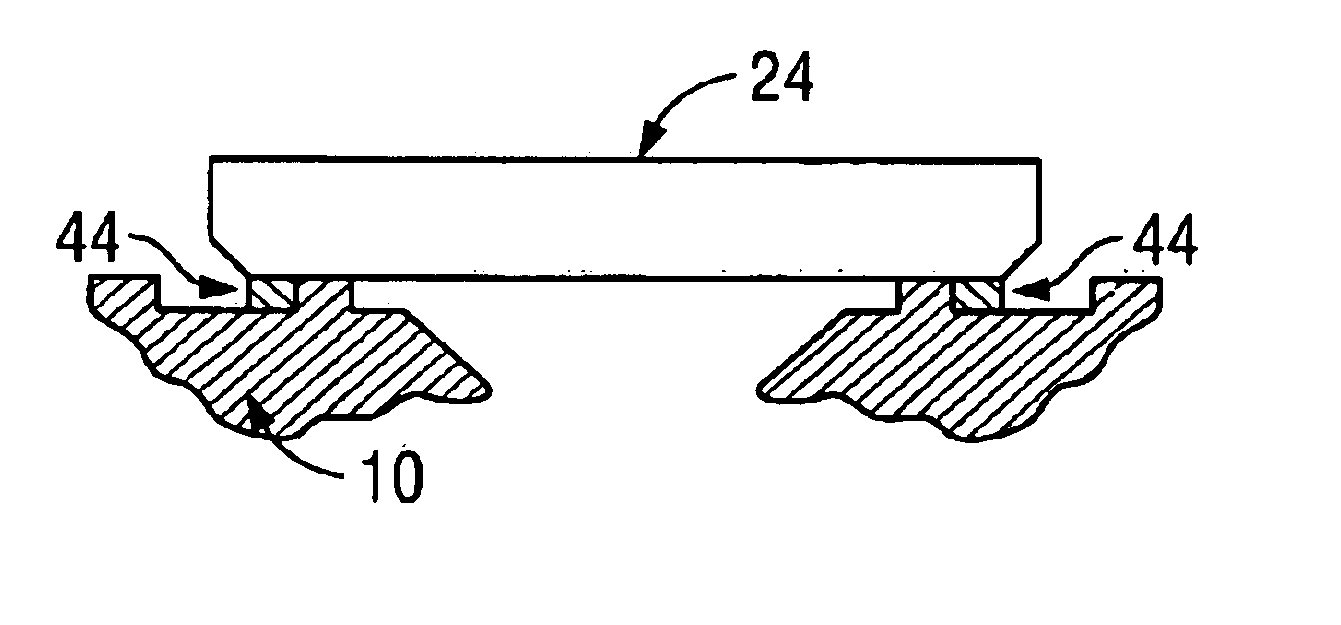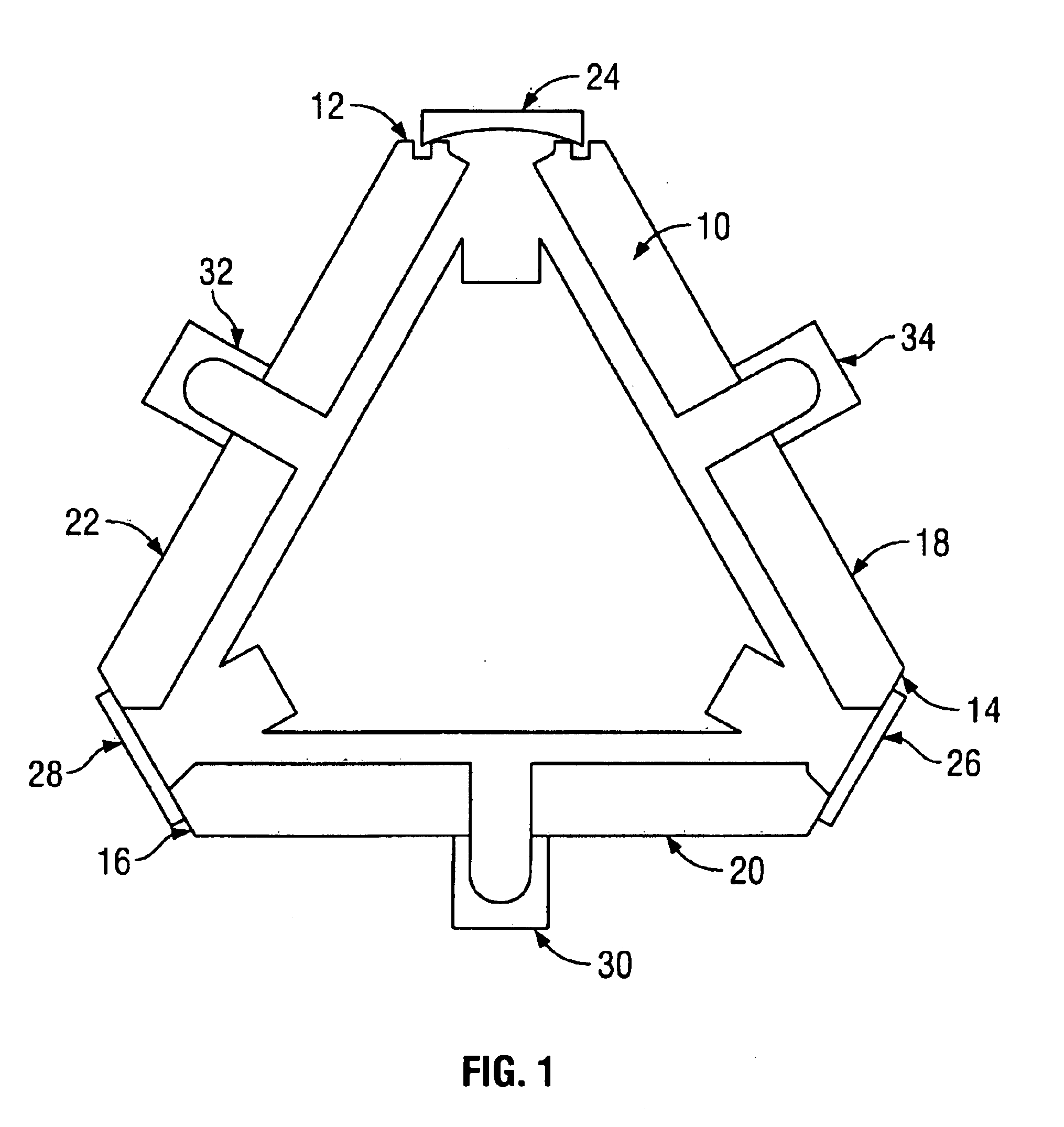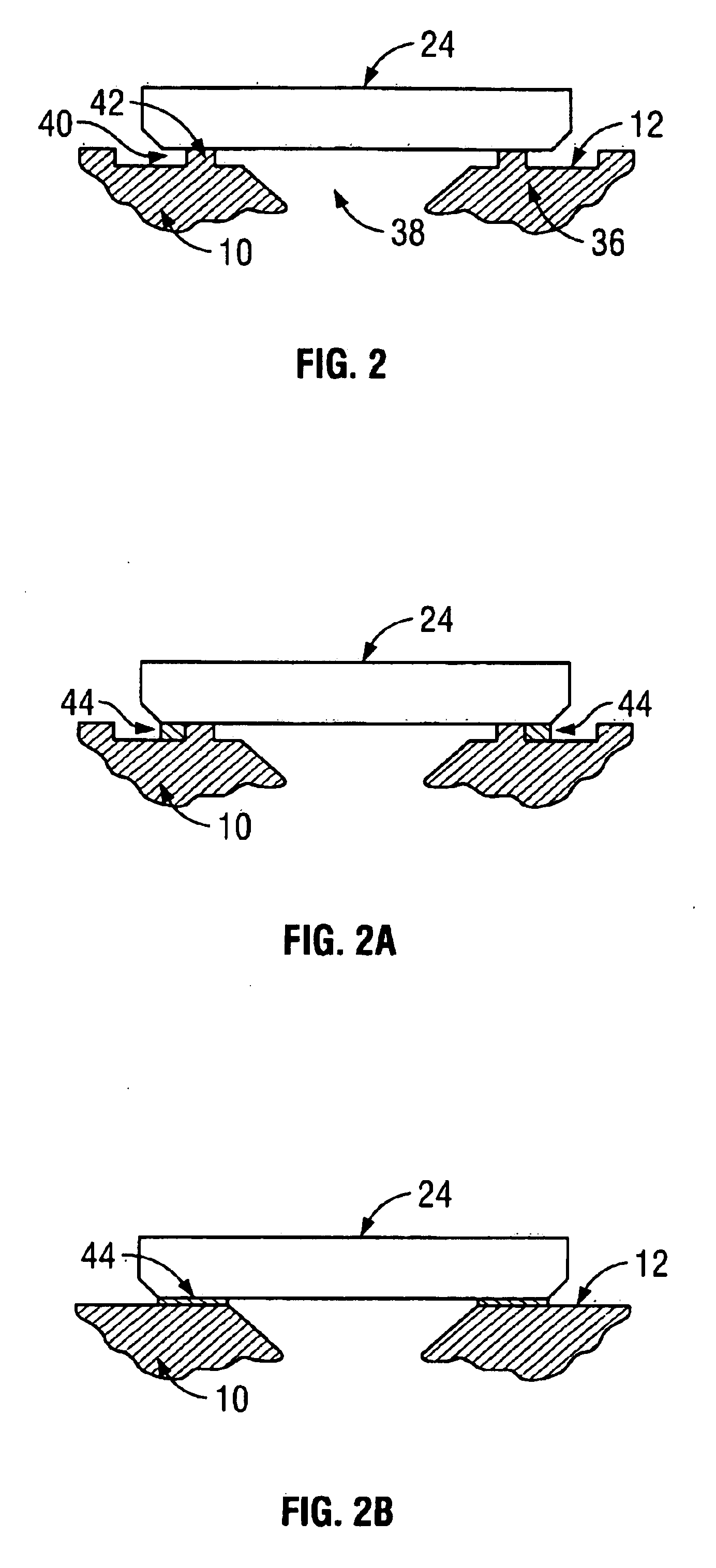Method of joining mirrors to ring laser gyro block assemblies
a laser gyroscope and mirror technology, applied in the direction of lasers, optical resonator shapes and construction, instruments, etc., can solve the problems of gyroscope failure, gyroscope operation failure, and lower limi
- Summary
- Abstract
- Description
- Claims
- Application Information
AI Technical Summary
Benefits of technology
Problems solved by technology
Method used
Image
Examples
Embodiment Construction
As described above, currently used methods and materials for attaching components to ring laser gyro blocks have distinct disadvantages, among them the need for labor-intensive preparation, and for high-temperature processing that may be harmful to some gyro components (which may also cause manufacturers to further restrict processing). Also, some bonds, such as those made at lower temperatures, may have shorter life cycles than other bonds.
Accordingly, exemplary and alternative exemplary embodiments of the present invention provide a method for attaching and sealing components to ring laser gyro blocks using a process that requires temperatures only somewhat higher (if at all) than room temperature, and that produces long-lasting hermetic seals that can withstand high temperatures. These advantages can be realized by allowing a fluid or gel adhesive to wick into the component-to-block interface. One adhesive that can be used is an aqueous sodium silicate, which hardens into a glass...
PUM
 Login to View More
Login to View More Abstract
Description
Claims
Application Information
 Login to View More
Login to View More - R&D
- Intellectual Property
- Life Sciences
- Materials
- Tech Scout
- Unparalleled Data Quality
- Higher Quality Content
- 60% Fewer Hallucinations
Browse by: Latest US Patents, China's latest patents, Technical Efficacy Thesaurus, Application Domain, Technology Topic, Popular Technical Reports.
© 2025 PatSnap. All rights reserved.Legal|Privacy policy|Modern Slavery Act Transparency Statement|Sitemap|About US| Contact US: help@patsnap.com



